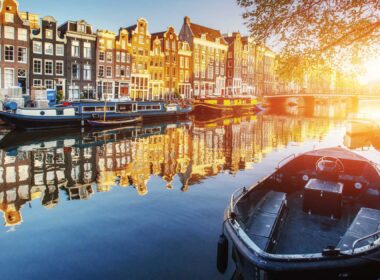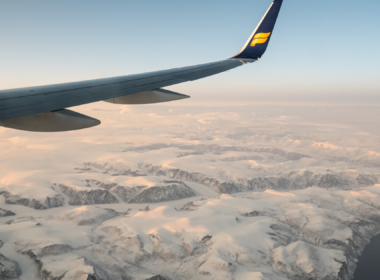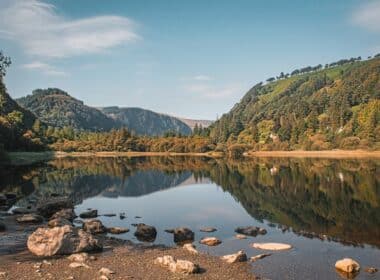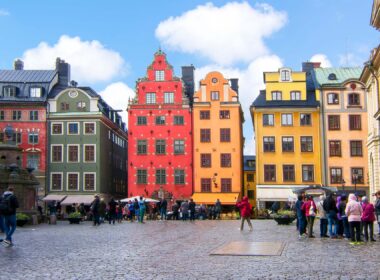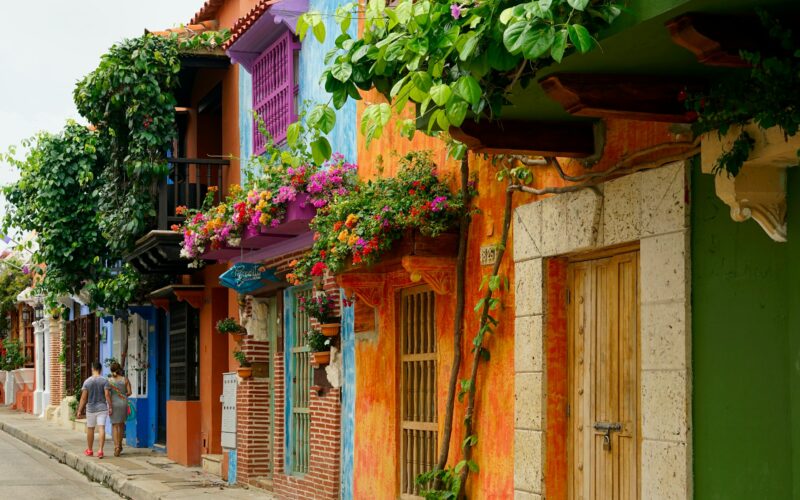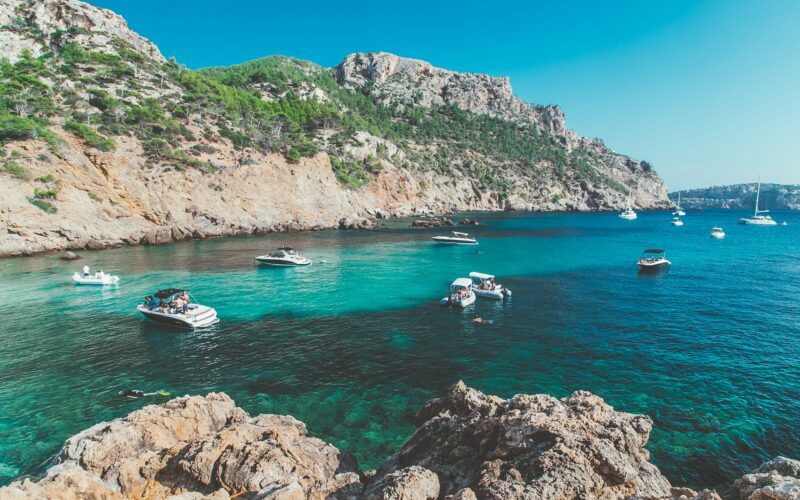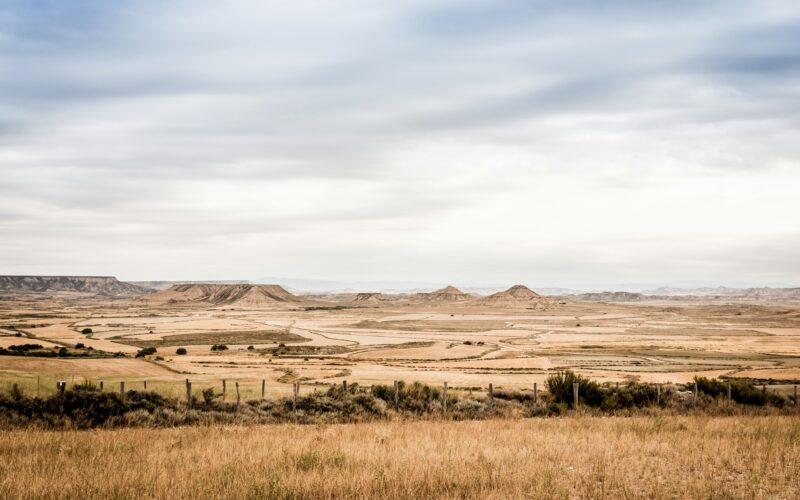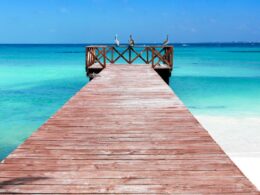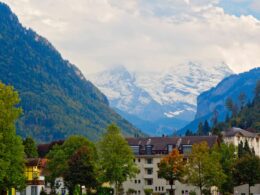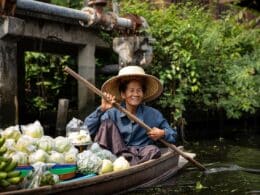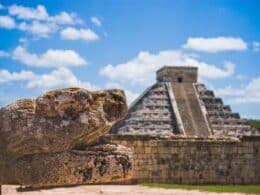Latin America is vast, and Colombia, named after the Spanish explorer Christopher Columbus (a fun fact for your next gathering, right?), who arrived on the shores of the New World in 1492, is one of its many jewels.
Colombia has much to offer. You can enjoy breathtaking landscapes featuring both Pacific and Caribbean beaches, dense Amazon rainforest, and high Andean plateaus, as well as a rich culture that blends colonial history with modernity.
There’s plenty to do during your stay! To help you navigate through the many options, Trazler offers a complete guide for a magical 15-day trip to Colombia, filled with the paisá charm (a sociocultural term Colombians affectionately use to describe themselves). Bienvenidos a Colombia (welcome to Colombia)!
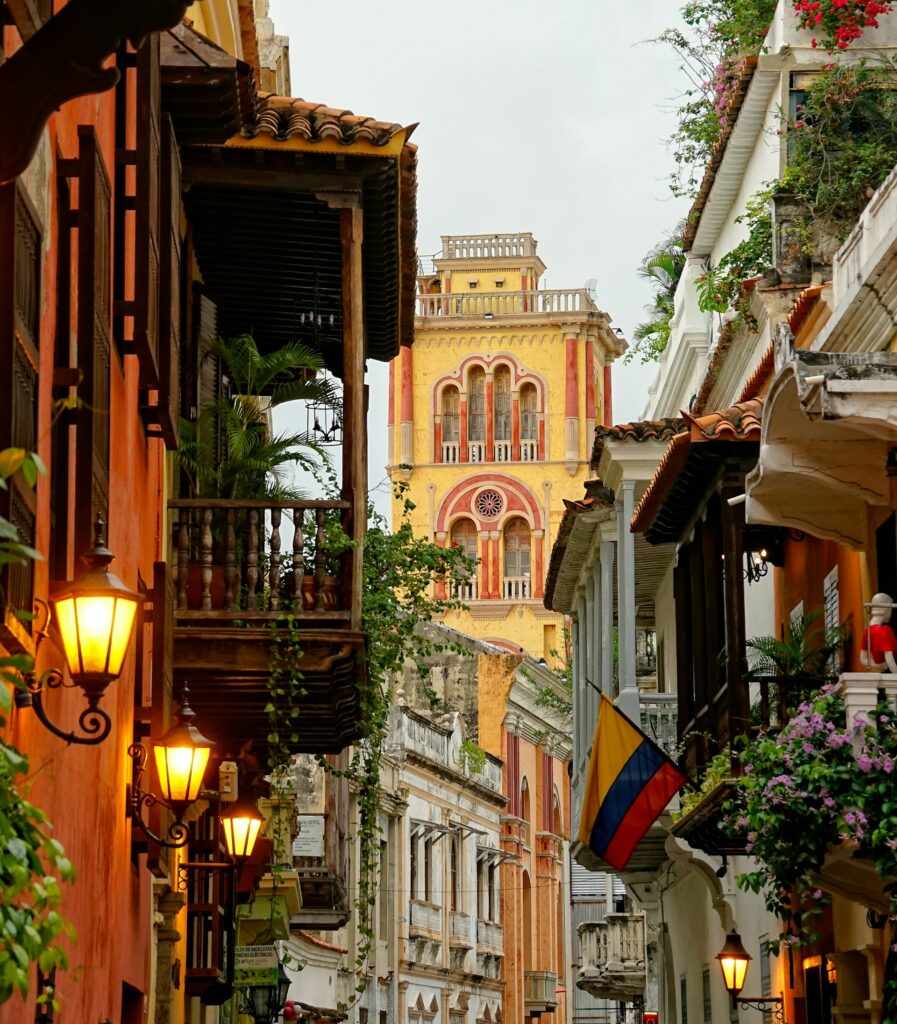
Preparing for your trip to Colombia
A brief history and geography lesson before departure
Before the arrival of the Spanish, Colombia was inhabited by various indigenous civilizations, including the Muiscas in the Andean region.
The Spanish arrived in Colombia in 1499, making the country a viceroyalty, with Bogotá as the administrative center. Independence was achieved in 1819, and the country became a republic in 1831.
In the 20th century, Colombia experienced several decades of political violence, with an armed conflict between the government, guerrillas (FARC, ELN), and paramilitaries. The end of the conflict with the FARC in 2016 marked a historic turning point towards peace.
Today, Colombia is characterized by its diverse population, with European, African, and indigenous influences. Afro-Colombian communities are mainly present on the Caribbean and Pacific coasts, while indigenous populations inhabit the Andean, Amazonian, and Orinoco regions.
Spanish is the official language, with over 60 indigenous languages spoken. Catholicism is the dominant religion, followed by a great diversity of beliefs. Colombians are known for their hospitality, highly appreciated by visitors.
The essentials of Colombian culture
First, the music: it’s impossible to visit Latin America without dancing the night away! Several genres dominate the Colombian music scene:
- Cumbia: originating from the Caribbean coast, it is one of the most emblematic musical genres in the country, blending indigenous, African, and Spanish rhythms.
- Vallenato: this Caribbean style is played with instruments like the accordion, guacharaca, and caja, often telling love stories.
- Salsa: though originally from Cuba and Puerto Rico, this rhythm is extremely popular in Colombia (and throughout Latin America), especially in Cali, known as the “world capital of salsa”.
- Música llanera: traditional music from the eastern plains, influenced by the cowboy culture (llaneros) of the region.
Next, the gastronomy: get ready to fill your belly with joy. Don’t miss:
- Arepas, flat corn cakes generously stuffed with cheese, meat, or eggs.
- Bandeja paisa, an iconic dish from the Antioquia region, consisting of rice, beans, meat (usually beef or pork), chorizo, fried egg, avocado, plantain, and arepa.
- Ajiaco, a traditional soup from Bogotá made with chicken, potatoes, corn, and guasca, a local herb.
- Empanadas, small pastries filled with meat, potatoes, or cheese, popular throughout the country.
- Buñuelos, fried cheese doughnuts, sold hot at street food stands.
- Lastly, coffee: Colombia is one of the largest coffee producers in the world, recognized for its exceptional quality, making it a national pride.
In short, Colombia is a country rich in history, with a vibrant, diverse culture, delicious cuisine, and welcoming, heterogeneous people. All the ingredients are there for an unforgettable vacation!
Choose your itinerary and accommodations based on your preferences
To determine your itinerary and choose your accommodations in Colombia, it’s essential to think about your interests, the length of your stay, and your budget.
First, define your interests and priorities. If you’re passionate about nature, consider visiting national parks (Tayrona, Los Nevados, the Amazon). For adventure, think about extreme sports in San Gil, or the Coffee Axis (Eje Cafetero) for hiking.
If history and culture attract you, explore cities like Bogotá (Gold Museum, Candelaria), Cartagena (colonial old town), Medellín, and Popayán, and archaeological sites (San Agustín, Tierradentro). For a relaxing vacation, the beaches of the Caribbean coast (Cartagena, Santa Marta, Palomino) or paradise islands (San Andrés, Providencia) are ideal.
Then, choose your accommodations based on your budget and the level of comfort you want. Colombia offers a wide range of options, from luxury hotels to eco-lodges, hostels, and Airbnb rentals. Think about staying close to the sites you want to visit, keeping security in mind.
Choosing the best time to explore Colombia
Traveling by season
Colombia, located near the equator, has a tropical climate with variations due to altitude. The dry season (December-March and July-August) is the best time to explore Colombia. It’s the ideal time for hiking in national parks, outdoor activities, and enjoying beaches and water activities.
During the rainy season (April-May and October-November), some regions, especially those at low altitudes, can experience intense rain. Hiking and excursions can be more challenging to plan. The Amazon and the Pacific are particularly humid, which is ideal for observing Amazonian wildlife and whales on the Pacific coast.
Exploring Colombia by annual events
If you are particularly drawn to Colombian culture, you can plan your trip around annual festivals and events. For example, the Barranquilla Carnival, held in February-March, is one of the largest and most famous in South America.
Semana Santa (Easter) is celebrated throughout the country with religious processions. It’s a very busy time, especially in colonial cities like Popayán.
Escape During the Off-Season
The off-season in Colombia generally falls in April and May, then from September to November. It corresponds to the rainy season, which significantly reduces tourist traffic.
If you wish to travel during the off-season, you can enjoy wildlife and nature observation. For a temperate climate, you can spend time in Medellín or on the Caribbean coasts.
Practical tips for a successful trip to Colombia
Packing your bags thoughtfully
When packing for a 15-day trip to Colombia, consider the diversity of climates and possible activities in the country. Think of lightweight but covering clothes to avoid sunburns and mosquitoes, sportswear for outdoor activities, a sweater and raincoat for cool and rainy evenings, and your beach gear! Bring city shoes and hiking boots.
Don’t forget a hat, sunglasses, sunscreen, insect repellent, a waterproof bag in case of rain, a waist pouch for important personal items, and any medications you may need. Remember your chargers, a water bottle, and slip your travel guide into a pocket of your bag!
Finally, take precautions: check visa requirements, recommended vaccines depending on the areas you’ll visit, and places to avoid. Always carry some Colombian pesos (COP). And don’t forget to enjoy yourself: it’s the key to a successful trip!
Know your transportation and accommodation options
To travel and stay in Colombia, you have access to a wide range of options, suitable for different types of travelers and budgets.
For transportation, Colombia’s major cities are well-served by domestic flights, economical and fast, with Avianca, LATAM, or Viva Air. Buses, widely used, offer premium, standard, and minibus options depending on the routes, with companies like Expreso Brasilia, Bolivariano, and Coomotor. In cities, you can take taxis or use public transportation networks.
As for accommodations, Colombia offers many options. There’s something for every taste and budget:
- Hotels: luxury, mid-range with good value for money, and budget hotels, simpler and often family-run.
- Hostels: perfect for budget travelers, offering shared dormitories or private rooms, often with original design, a friendly atmosphere, and various activities.
- Guesthouses: run by families, they offer a more authentic experience, ideal for cultural immersion, allowing you to share traditional meals with hosts and get advice on local activities.
- Ecolodges: ideal for nature lovers, they are located in natural environments (Amazon jungle, national parks). Balancing comfort with environmental respect, they offer hiking or birdwatching trips.
- Airbnb and other rental platforms: they offer a variety of options for more privacy and flexibility, from modern apartments to colonial houses.
- Fincas: located in the Coffee Axis, these farms offer stays in agricultural estates, providing a unique experience of Colombian life.
What budget to plan for 15 days in Colombia?
The budget for a 15-day trip to Colombia can vary depending on several factors, including accommodation, activities, and preferences in food and transportation:
- For the flight to Colombia, set aside between €400 and €1,000 per person depending on your departure city.
- For accommodation, count between €15 and €40 per night for hostels or budget hotels, around €100 for mid-range hotels, and more for luxury hotels.
- For transportation, plan between €30 and €100 per domestic flight, between €10 and €30 per long-distance bus trip, and between €1 and €5 per taxi ride within the city.
- For food, budget between €3 and €7 for a meal at a local restaurant or street food, between €10 and €20 at a typical restaurant, and more for a fine dining experience.
- For activities, expect to spend between €10 and €50 for guided tours/excursions, between €2 and €10 for entrance to parks and museums, and additional funds if you plan on other types of activities.
- Get travel insurance, which will cost between €50 and €100 for 15 days.
- Finally, set aside a small amount for unexpected expenses and souvenirs.
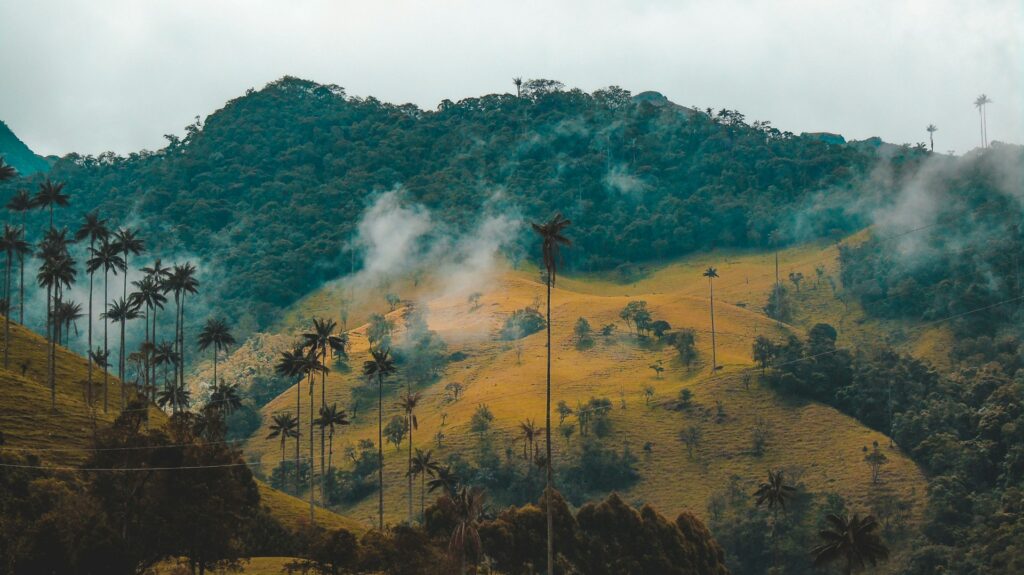
The Perfect Itinerary for Exploring Colombia
We’ve reached the juiciest part of our guide (just as juicy as a buñuelo, if you’ve been following along). Here’s Trazler’s suggestion for an ideal two-week itinerary in Colombia, mixing culture, nature, and iconic cities. Buen viaje (have a good trip)!
Days 1, 2, and 3
Arrive and explore the Colombian capital, Bogotá. Lose yourself in the historic district of La Candelaria, Plaza Bolívar, and visit the Gold Museum.
Climb to the top of Mount Monserrate for a panoramic view of the city, then explore the Botero Museum and the colorful streets of the center. If jet lag isn’t too bad, consider a trip to the Salt Cathedral of Zipaquirá, a unique site located about an hour from Bogotá.
Days 4 and 5
Head north to Villa de Leyva, a well-preserved colonial village in the Boyacá department, and stroll through Plaza Mayor, one of the largest squares in Colombia.
Next, explore the surroundings: visit the Casa Terracota, the La Candelaria desert, and admire the fossils at Museo El Fósil.
Days 6, 7, and 8
Head to Medellín. Discover the city and observe its modernization by visiting Parque de los Deseos, the Antioquia Museum, and Plaza Botero. Enjoy the galleries and museums, and savor street food in the El Poblado and Laureles neighborhoods.
Take the cable car to Parque Arví, a large natural park. Visit Comuna 13 to understand Medellín’s history and admire the famous graffiti. Consider a day trip to Guatapé to see (and climb) the El Peñol rock and get lost among the colorful houses of the village.
Days 9 and 10
Travel to the coffee region (Zona Cafetera), particularly around the towns of Salento or Manizales. Visit a coffee plantation to learn more about the production process.
Next, explore the magnificent Cocora Valley, famous for its giant wax palms. Try the hike to Los Nevados National Park.
Days 11, 12, and 13
Fly to Cartagena de Indias on the Caribbean coast. Stroll through the old fortified town, with its cobblestone streets, flowered balconies, and colorful buildings.
Visit the San Felipe de Barajas Castle and the bohemian Getsemaní neighborhood. Enjoy a lively evening in local bars and restaurants. Then, enjoy the Caribbean Sea with a trip to the Rosario Islands to relax on paradise beaches.
Day 14
Spend the day in Tayrona National Park. Admire its natural richness with a hike through the jungle to isolated beaches like Cabo San Juan, and enjoy the white sand and turquoise waters.
Day 15
Return to Bogotá for your departure flight. Take the opportunity to do some shopping, buy your last souvenirs, or discover other parts of the city and their graffiti through bike or walking city tours.
Clearly, Colombia is an ideal vacation destination, mixing culture, nature, adventure, and relaxation. You’ll return with glittering eyes and salsa in your ears (and likely a few extra kilometers on your feet too)!
Adaptable to all budgets and travel inspirations, Colombia offers a beautiful preview of the rich, multiethnic, and multicolored culture of Latin America. You’ll only want to return to explore even more.
If you’ve been convinced by our 15-day itinerary suggestion, visit us at Trazler: our online platform allows you to book your trip easily, with everything (tickets, accommodations, transportation) in one place and at the best price. Que disfruten de su viaje a Colombia (enjoy your trip to Colombia)!
In Colombia, don’t miss the cities of Bogotá, Medellín, and Cartagena. Visit Tayrona National Park, the Amazon rainforest, the Pacific and Caribbean beaches, and explore the coffee region.
Make sure to plan your trip in advance to book your transportation and accommodations, get your vaccinations and travel insurance, and consider the temperature variations when packing.
The country offers numerous accommodation options: hotels, hostels, guesthouses, ecolodges, Airbnbs, and fincas.


